- Introduction
- Purpose of F-1 Visas
- F-1 Application Process
- Arriving in the United States in F-1 Status
- Derivative F-2 Visas
- Potential Issues
- Conclusion
Introduction
The F-1 (F1) nonimmigrant visa category is for foreign students who want to study full time in the United States. It differs from the M1 visa category (study at a vocational or non-academic institution) and J1 (exchange viator) categories. Below, we provide a concise introduction to applying for F1 visas in the first instance (this article does not cover renewals or extensions).
Purpose of F-1 Visas
Foreign nationals who want to enter the United States to study full time at one of the following institution types may look into applying for an F1 visa (8 C.F.R. 214.2(f)):
- University or college
- Academic High School
- Private Elementary School
- Seminary
- Conservatory
- Other academic institutions including language training programs
Those who are seeking to study at a vocational or non-academic institution other than a language training program are amenable to the M1 classification instead of F1. Students who seek to enter to partake in a short period of recreational study may consider the B nonimmigrant visitor category.
In the vast majority of F1 cases, a student will be seeking to enroll in a single qualifying institution or program to engage in a full course of study. However, the regulations do permit students to enroll in more than one SEVP-certified school “so long as the combined enrollment amounts to a full course of study.” 8 C.F.R. 214.2(f)(6)(iv).
There are special rules and restrictions for using an F1 visa to study at a public high school. Please see our related article for more information.
F-1 Application Process
The first step to obtaining an F1 visa is to be accepted for enrollment into an academic institution that is approved by the Student and Exchange Visitor Program (SEVP). The F1 visa is only for prospective students who have an offer of enrollment into a qualifying school. It is not for foreign nationals to look for a school to enroll in. A foreign national looking to go on campus visits may use a B2 visa, but there are specific policies governing change of status from B visitor to F1.
After being accepted for enrollment, the foreign national will be registered for the Student and Exchange Visitor Information System (SEVIS) and he or she must pay the SEVIS I-901 fee. After paying the student pays the fee, his or her school should provide the student with the Form I-20. After receiving the Form I-20, the student may apply for an F1 visa.
The precise steps for applying for an F1 visa depend on whether the foreign national is seeking a visa abroad or applying for change of nonimmigrant status from inside the United States.
If the foreign national is applying abroad, he or she must apply for a visa at a U.S. Embassy or Consulate. The foreign national will be required to present the Form I-20 at the interview. In most (but not all) cases, prospective students aged 13 or younger will not have to undergo an interview.
If the prospective student is already in the United States and maintaining lawful nonimmigrant status, he or she may be able to change his or her status to F1 without departing the United States. Please see our full article for more information about changing status to F1 or M1. Those considering change in status may take note of the fact that studying is permitted under certain nonimmigrant categories but not others (see our full article).
Arriving in the United States in F-1 Status
An F1 visa may be approved up to 365 days in advance of the start date of the relevant course of study. F1 students may be admitted to the United States on an F1 visa for a period of up to 30 days before the indicated report date or program start date listed on the student’s Form I-20 (8 C.F.R. 214.2(f)(3)).
Derivative F-2 Visas
A principal F1 visa holder are eligible to be accompanied by his or her spouse or minor children. Spouses and minor children may obtain F2 visas as the derivative of an F1. The regulations at 8 C.F.R. 214.2(f)(3) set forth the requirements for F2 status:
- Must be spouse or minor child of F1 principal
- Must either be accompanying an F1 principal nonimmigrant or following to join
- In order to follow to join an F1 principal, spouse and/or children must demonstrate that F1 principal student has been admitted as a student or will be within 30 days enrolled in a full course of study or engaged in approved practical training following completion of studies
An F2 spouse or child can only maintain F2 status so long as the F1 principal maintains his or her F1 student status. Potential F2 derivatives must be aware that the F2 nonimmigrant visa category does not permit employment (8 C.F.R. 214.2(f)(15)(i)).
F1 post-completion practical training is beyond the scope of this article, but you can learn about the rules and regulations in our separate post.
We discuss rules and regulations pertaining to F2 status in a separate article.
Potential Issues
Many foreign students study in the United States on F1 visas, and it is not among the most rigorous visa categories in terms of its evidentiary requirements. However, every F1 visa petition, much like any immigration petition, application, or benefit request is case-specific, and the prospective student bears the burden of establishing that he or she is eligible for the benefit sought.
Like most nonimmigrants, F1 students must overcome the presumption of immigrant intent, which derives from section 214(b) of the INA. That is, an F1 visa applicant must establish that he or she intends to return to his or her home country upon the completion of studies. The difficulty in establishing nonimmigrant intent may vary from case to case. The State Department’s Foreign Affairs Manual (“FAM”) provides that prospective students must establish that they have a residence abroad, have no immediate intention of abandoning their residence abroad, and intend to depart the United States upon completion of their studies (9 FAM 402.5-5(E)(1)).
The F1 visa category prohibits employment outside of certain specified cases. Unauthorized employment would result in the student no longer maintaining lawful status and subject the student to potential removal and other immigration penalties. In general, this means that a prospective F1 student will have to establish that he or she can pay his or her educational and living expenses in the United States without seeking employment outside of cases involving those seeking entry to engage in authorized employment under the post-completion optional practical training provisions.
Adjudicators will consider whether the prospective student has “sufficient funds to cover expenses” (22 C.F.R. 41.61(b)(1)(ii); 9 FAM 402.5-5(G)(1)). Personal funds, scholarships, assistantships, fellowships, and approved on-campus employment may be considered (Id.). Adjudicators may consider the length of the proposed course of study in determining whether the student has sufficient funds (Id.). Prospective students and dependents are not required to have U.S. medical or travel insurance (9 FAM 402.2-5(G)(2)).
If the prospective student’s course of study appears to require English proficiency, consular officers may evaluate whether the prospective student is sufficiently proficient in English (9 FAM 402.5-5(F)(1)). Adjudicators will generally consider whether the student possesses the academic qualifications to engage in the proposed course of study (9 FAM 402.5-5(H)(1)).
Finally, students looking to study in high technology fields at higher levels may be subjected to more scrutiny.
Conclusion
This article is a short primer to applying for F1 visas. Whether an F1 visa is the best path for a particular individual to study in the United States depends on the individual’s unique situation. We recommend consulting with an experienced immigration attorney for case-specific guidance.





